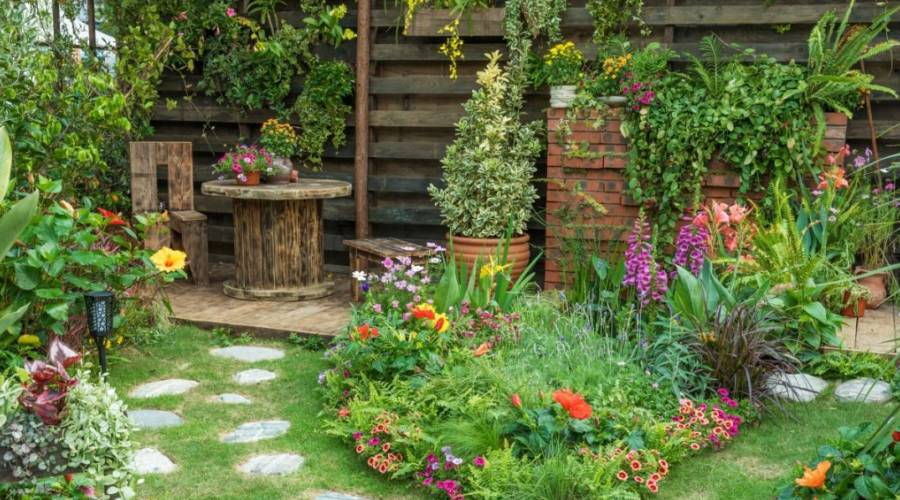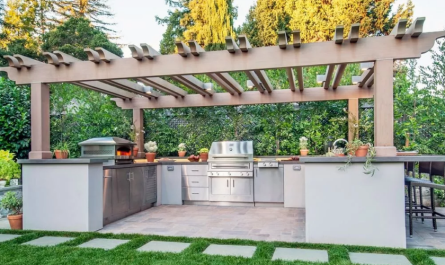Creating a sustainable garden that flourishes in every season is more than a passion project—it’s a way to reduce environmental impact while enjoying the beauty of nature. With a few thoughtful design choices, you can have a garden that supports local ecosystems, conserves water, and minimizes waste. Here’s how you can design a garden that thrives all year long.
1. Choose Native Plants
Native plants are the backbone of a sustainable garden. These plants are naturally adapted to your local climate and require less water, fertilizer, and care. They also support local wildlife, such as pollinators like bees and butterflies.
- Why Choose Native Plants? They thrive without the need for excessive irrigation or chemical treatments.
- How to Find Them: Visit local nurseries or check online resources to find native species that suit your region.
2. Plan for Every Season
To keep your garden vibrant all year, include plants that bloom in different seasons. Design your garden to offer visual interest, from colorful flowers in spring to evergreens in winter.
- Spring & Summer: Include fast-growing annuals and perennials like daisies, lavender, and sunflowers.
- Fall & Winter: Opt for hardy perennials, ornamental grasses, and evergreens like holly or juniper that stay green throughout winter.
3. Use Compost and Mulch
Composting is essential for a sustainable garden. It enriches the soil naturally and reduces the need for chemical fertilizers. Mulch, on the other hand, conserves water by reducing evaporation, suppresses weeds, and adds nutrients to the soil as it breaks down.
- Composting Tips: Use kitchen scraps like vegetable peels, coffee grounds, and yard clippings to create rich compost for your garden.
- Mulch Ideas: Organic mulch like straw, wood chips, or shredded leaves help protect soil health.
4. Water Conservation Techniques
Water conservation is a crucial part of sustainable gardening. Simple strategies like installing drip irrigation or collecting rainwater can significantly reduce water usage.
- Drip Irrigation: Delivers water directly to plant roots, preventing wasteful runoff.
- Rain Barrels: Collect rainwater to use during dry spells, reducing dependence on municipal water sources.
5. Avoid Chemical Pesticides
A truly sustainable garden avoids harmful chemical pesticides and fertilizers. These can damage local ecosystems and contaminate groundwater. Instead, opt for organic and natural alternatives.
- Natural Pest Control: Use neem oil, diatomaceous earth, or companion planting to repel pests. Plants like marigolds and basil naturally deter insects.
- Attract Beneficial Insects: Ladybugs, lacewings, and bees help control harmful pests and promote pollination.
6. Incorporate Raised Beds and Vertical Gardens
Raised beds and vertical gardens are great for maximizing space and improving drainage, especially in areas with poor soil. They also make it easier to manage your garden’s health.
- Raised Beds: Improve drainage and prevent soil compaction, creating a better growing environment.
- Vertical Gardens: Perfect for small spaces, vertical gardening helps you grow more in less space.
7. Harvest Seeds and Practice Crop Rotation
To keep your garden sustainable over the long term, practice seed saving and crop rotation. This reduces the need for purchasing new seeds each year and keeps your soil healthy.
- Seed Saving: Collect seeds from your healthiest plants at the end of the growing season to replant next year.
- Crop Rotation: Prevents soil depletion by rotating crops to different areas each season, improving soil fertility.
8. Support Pollinators
Pollinators like bees, butterflies, and birds are essential to a thriving garden. Plant flowers that attract these beneficial creatures, and avoid using chemicals that harm them.
- Plant for Pollinators: Flowers like echinacea, bee balm, and sunflowers are ideal for attracting pollinators.
- Provide Shelter: Install bee hotels or leave areas of your garden undisturbed to create natural habitats for insects and birds.
Conclusion
Designing a sustainable garden that thrives year-round is both fulfilling and environmentally responsible. By choosing native plants, conserving water, and avoiding chemicals, you can create a garden that’s not only beautiful but also supports local ecosystems. With these tips, your garden will flourish in every season while leaving a positive impact on the environment.







